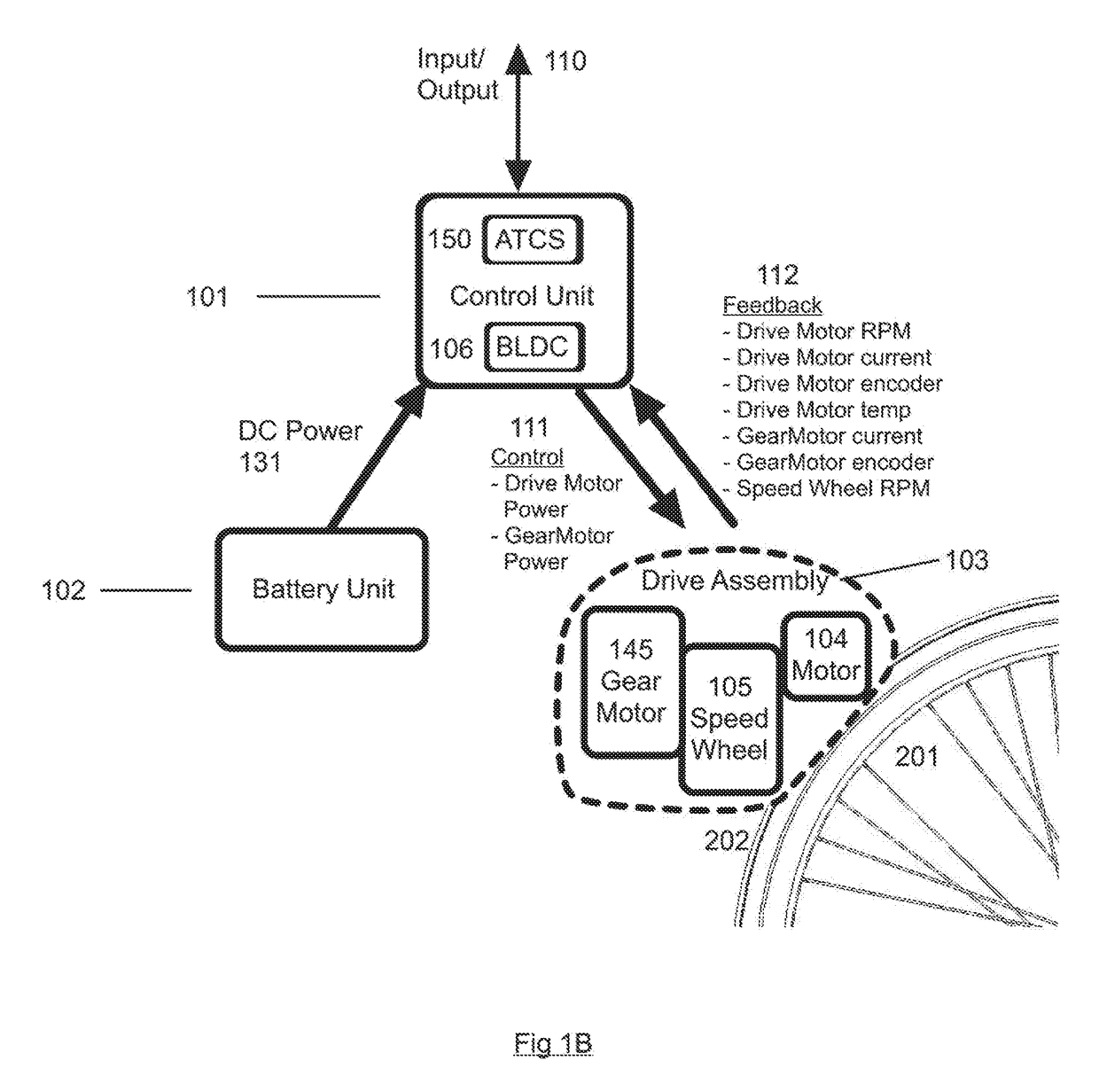Friction drive with speed wheel and automatic traction control
a technology of automatic traction control and friction drive, which is applied in the direction of cycle, transportation and packaging, etc., can solve the problems of sudden and unpredictable changes in the power delivered to the wheel, sudden and reduced friction coefficient, and prone to slippage between the tire and the contact surface, so as to prevent slippage, accurately measure the speed of the tire, and reliably determine whether slippage is occurring
- Summary
- Abstract
- Description
- Claims
- Application Information
AI Technical Summary
Benefits of technology
Problems solved by technology
Method used
Image
Examples
Embodiment Construction
[0044]As shown in FIG. 1A, embodiments of friction drive system 100 include control unit 101, battery unit 102, and drive assembly 103. Battery unit 102 may provide electrical power to control unit 101 and drive assembly 103. Control unit 101 may provide control information (and commands) to battery unit 102 and drive assembly 103. Drive assembly 103 may provide power to a tire (or wheel) of a wheeled vehicle, or it may provide power to a hub or crank assembly of a wheeled vehicle, or it may provide power to another portion of the wheeled vehicle, depending on the particular embodiment. In some embodiments, friction drive system 100 may be provided as one or more separate units which may be mounted to a wheeled vehicle. In other embodiments, friction drive system 100 may be integrated with a wheeled vehicle, for example, as an electric bicycle, scooter, or wheelchair.
[0045]As shown in the embodiment of FIG. 1B, drive assembly 103 may include drive motor 104 and speed wheel 105. Driv...
PUM
 Login to View More
Login to View More Abstract
Description
Claims
Application Information
 Login to View More
Login to View More - R&D
- Intellectual Property
- Life Sciences
- Materials
- Tech Scout
- Unparalleled Data Quality
- Higher Quality Content
- 60% Fewer Hallucinations
Browse by: Latest US Patents, China's latest patents, Technical Efficacy Thesaurus, Application Domain, Technology Topic, Popular Technical Reports.
© 2025 PatSnap. All rights reserved.Legal|Privacy policy|Modern Slavery Act Transparency Statement|Sitemap|About US| Contact US: help@patsnap.com



